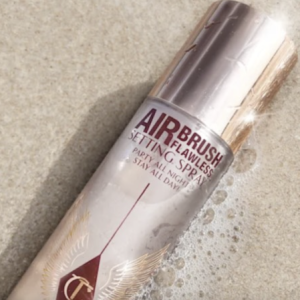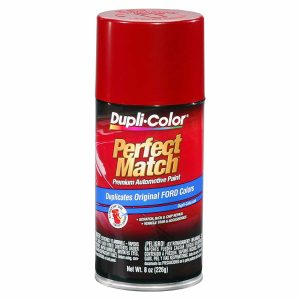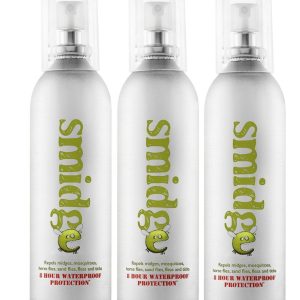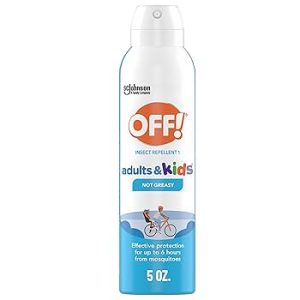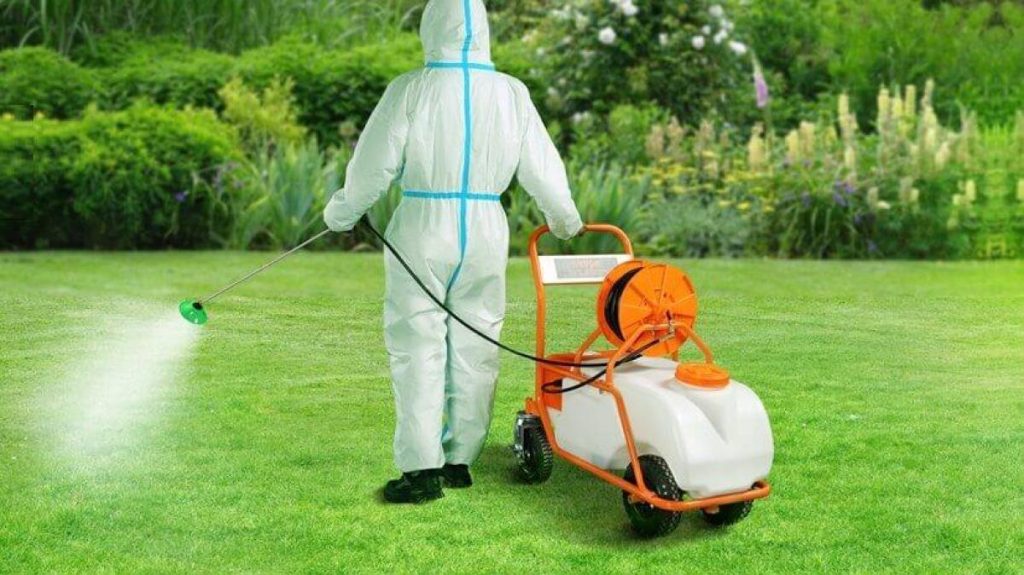
When it comes to maintaining large properties, farms, or commercial landscapes, having the right equipment can make all the difference between a time-consuming chore and an efficient operation. Pull behind sprayers have become an indispensable tool for property owners, farmers, and landscaping professionals who need to cover substantial ground with herbicides, pesticides, fertilizers, or other liquid applications. These versatile implements offer the perfect balance of capacity, efficiency, and maneuverability that handheld or push sprayers simply cannot match.
The evolution of pull behind spray equipment has transformed how we approach large-scale liquid applications. From simple tank-and-pump combinations to sophisticated systems with GPS guidance and variable rate technology, these machines have adapted to meet the growing demands of modern agriculture and landscape management. Understanding the intricacies of pull behind sprayer systems is crucial for anyone looking to maximize their productivity while minimizing labor costs and application time.
What is a Pull Behind Sprayer and How Does It Work?
A pull behind sprayer is a tank-mounted spraying system designed to be towed behind tractors, ATVs, UTVs, or other vehicles. Unlike self-propelled sprayers or handheld units, these systems rely on the towing vehicle for mobility while focusing their design on maximizing tank capacity and spray coverage. The fundamental principle involves storing liquid chemicals or solutions in a tank, pressurizing the system through various pump mechanisms, and distributing the material through strategically placed nozzles across a boom or handheld wand.
The core components of any pull behind sprayer include the tank assembly, pump system, pressure regulation controls, distribution boom, and nozzle configuration. The tank, typically constructed from polyethylene or fiberglass materials, serves as the primary storage reservoir and can range from 25 gallons for small residential units to over 1,000 gallons for commercial agricultural applications. The pump system, whether diaphragm, centrifugal, or piston-driven, creates the necessary pressure to move liquid from the tank through the distribution system to the target area.
Modern tow behind sprayers incorporate sophisticated pressure regulation systems that maintain consistent output regardless of ground speed or boom configuration. These systems often include pressure gauges, flow meters, and electronic controls that allow operators to fine-tune application rates in real-time. The distribution boom, which can extend from 10 feet to over 120 feet in width, features multiple nozzles spaced at specific intervals to ensure uniform coverage across the spray pattern.
Types of Pull Behind Sprayers: Finding the Right Match for Your Needs
Boom Sprayers: The Workhorses of Large-Scale Applications
Boom pull behind sprayers represent the most common and versatile category of towed spray equipment. These systems feature horizontal booms that extend outward from the central tank assembly, creating wide spray patterns that can cover substantial ground with each pass. Boom widths typically range from 15 feet for compact units to 120 feet or more for large agricultural operations. The key advantage of boom sprayers lies in their ability to maintain consistent spray height and coverage across the entire working width.
The boom assembly itself is engineered with multiple break-away sections that fold for transport and storage while providing protection against damage from obstacles in the field. Each boom section contains multiple nozzles, typically spaced 20 inches apart, that create overlapping spray patterns for uniform coverage. Advanced boom systems incorporate hydraulic or electric folding mechanisms, individual section controls, and boom height adjustment features that enhance operator convenience and application precision.
Boomless Sprayers: Flexibility and Maneuverability Combined
For operators working in irregular terrain, around obstacles, or in areas where boom sprayers prove impractical, boomless pull behind sprayers offer an excellent alternative. These systems eliminate the traditional boom structure in favor of specialized nozzles that create wide spray patterns from a single or dual nozzle configuration. Boomless nozzles can achieve effective spray widths of 30 to 60 feet while maintaining the maneuverability to navigate tight spaces and irregular boundaries.
The primary advantage of boomless systems lies in their simplicity and reduced maintenance requirements. Without the complex boom structure, folding mechanisms, and multiple breakaway points, these sprayers offer fewer potential failure points and easier operation for novice users. However, boomless sprayers typically sacrifice some spray pattern uniformity compared to boom systems, making them better suited for applications where precision is less critical than coverage speed and operational flexibility.
Spot Sprayers: Precision for Targeted Applications
Spot sprayer pull behind units cater to applications requiring precision rather than broad coverage. These systems feature handheld spray guns or targeted nozzle configurations designed for treating specific areas, individual plants, or problem spots within larger areas. Spot sprayers typically feature smaller tanks, ranging from 25 to 200 gallons, and incorporate high-pressure pumps capable of delivering concentrated applications over smaller areas.
The versatility of spot spraying systems makes them invaluable for weed control in sensitive areas, tree and shrub treatments, or any application where avoiding non-target vegetation is crucial. Many spot sprayers include foam markers or dye systems that help operators track treated areas and prevent overlap or missed spots during application.
Key Benefits of Using Pull Behind Sprayer Systems
Increased Efficiency and Time Savings
The most compelling advantage of pull behind sprayers is their ability to dramatically reduce application time compared to handheld or push alternatives. A typical boom sprayer covering 40 feet with each pass can treat the same area in one-tenth the time required by a handheld unit covering 4 feet. This efficiency translates directly into labor cost savings and allows operators to complete large-scale applications within optimal weather windows.
Consider the mathematical advantage: a 1,000-gallon tow behind sprayer with a 60-foot boom operating at 8 mph can cover approximately 60 acres per hour, compared to the 2-3 acres per hour typically achieved with handheld equipment. This 20:1 efficiency ratio becomes even more significant when factoring in reduced operator fatigue and the ability to maintain consistent application speeds over extended periods.
Superior Coverage and Application Uniformity
Pull behind spray equipment excels at maintaining consistent application rates and uniform coverage across large areas. The elevated tank position provides consistent pressure to all nozzles, while the boom configuration ensures proper spacing and overlap between spray patterns. This uniformity is crucial for achieving optimal results with herbicides, pesticides, and fertilizers where uneven application can lead to poor efficacy or crop damage.
Modern pull behind sprayers incorporate flow meters, pressure regulators, and even GPS-guided variable rate technology that automatically adjusts application rates based on ground speed and predetermined prescription maps. These features ensure that every square foot receives the intended application rate, regardless of operator skill level or varying field conditions.
Cost-Effectiveness for Large Properties
While the initial investment in a quality pull behind sprayer may seem substantial, the long-term cost benefits become apparent when calculated on a per-acre basis. Professional application services typically charge $15-30 per acre for liquid applications, meaning a 100-acre property owner could spend $1,500-3,000 annually on professional services. A mid-range tow behind sprayer costing $3,000-5,000 can pay for itself within two to three seasons while providing the flexibility to treat areas as needed throughout the growing season.
Essential Features to Consider When Selecting Pull Behind Sprayers
Tank Capacity and Construction Materials
Tank capacity represents one of the most critical decisions when selecting a pull behind sprayer. Smaller properties under 20 acres can often be served adequately by tanks in the 100-300 gallon range, while larger operations may require 500-1,000 gallon capacity or more. The key consideration is balancing coverage needs with the practical limitations of your towing vehicle and local weight restrictions.
Tank construction materials significantly impact durability and chemical compatibility. Polyethylene tanks offer excellent chemical resistance, lighter weight, and lower cost, making them suitable for most agricultural and landscape applications. Fiberglass tanks provide superior durability and UV resistance but at higher cost and weight. Stainless steel tanks, while expensive, offer the ultimate in durability and are required for certain specialty chemicals that may not be compatible with plastic materials.
Pump Systems and Pressure Capabilities
The pump system forms the heart of any pull behind sprayer, and selecting the appropriate pump type is crucial for achieving desired performance. Diaphragm pumps represent the most common choice for agricultural applications, offering excellent chemical compatibility, self-priming capability, and the ability to run dry without damage. These pumps typically provide pressures up to 100 PSI and flow rates sufficient for boom widths up to 60 feet.
Centrifugal pumps excel in high-volume, low-pressure applications and offer superior reliability for continuous operation. However, they require priming and cannot run dry, making them better suited for permanent installations or operations with experienced operators. Piston pumps provide the highest pressures, up to 1,000 PSI or more, making them ideal for spot spraying applications or situations requiring long hose runs or high-pressure nozzles.
Boom Configuration and Nozzle Selection
Boom design significantly impacts both performance and operational convenience. Hydraulic folding booms offer the ultimate in convenience, allowing operators to fold and unfold boom sections from the tractor seat. These systems are particularly valuable for operators who frequently transport equipment between locations or work in areas with varying width requirements.
Manual folding booms provide similar functionality at lower cost but require operators to leave the tractor for boom adjustments. Fixed booms offer the lowest cost and highest reliability but sacrifice transport convenience and versatility in varying width applications.
Nozzle selection directly impacts spray pattern, droplet size, and application uniformity. Flat fan nozzles provide the most common spray pattern for broadcast applications, creating overlapping fan patterns that ensure uniform coverage. Flood nozzles produce larger droplets and wider patterns, making them suitable for drift-sensitive applications or higher ground speed operations.
Pull Behind Sprayer Maintenance: Ensuring Long-Term Performance
Routine Cleaning and Chemical Compatibility
Proper maintenance begins with thorough cleaning after each use, particularly when switching between different chemicals or at the end of the application season. Pull behind sprayers require complete system flushing to prevent chemical residue buildup that can damage components or contaminate future applications. A typical cleaning procedure involves filling the tank with clean water, running the system to flush all lines and nozzles, then adding a tank cleaner solution for more thorough decontamination.
Chemical compatibility extends beyond just the tank material to include all wetted components such as seals, gaskets, hoses, and pump internals. Maintaining a chemical compatibility chart and following manufacturer recommendations prevents premature component failure and ensures safe operation. Regular inspection of seals and gaskets helps identify compatibility issues before they result in system failure or environmental contamination.
Pump Maintenance and Troubleshooting
Pump maintenance varies significantly based on pump type, but all systems benefit from regular inspection and preventive maintenance. Diaphragm pumps require periodic diaphragm replacement, typically every 500-1,000 hours of operation or annually, whichever comes first. Valve maintenance, including cleaning and replacement of check valves, ensures consistent pressure and flow performance.
Winterization procedures are crucial for operators in freezing climates. Complete system drainage, including tank, lines, and pump, prevents freeze damage that can result in expensive repairs. Some operators prefer using antifreeze solutions specifically designed for sprayer systems, though complete drainage is generally more reliable and environmentally friendly.
Best Practices for Pull Behind Sprayer Operation
Application Rate Calibration and Accuracy
Achieving accurate application rates requires proper calibration that accounts for ground speed, nozzle flow rates, and system pressure. The basic calibration formula involves measuring actual ground speed, determining nozzle flow rates at operating pressure, and calculating the resulting application rate per acre. Most pull behind sprayers include flow meters or application rate controllers that simplify this process, but periodic verification through manual calibration ensures continued accuracy.
GPS technology has revolutionized application accuracy by providing precise ground speed measurement and automatic rate adjustment based on predetermined prescription maps. Advanced systems can vary application rates across individual zones within a field, optimizing chemical usage and improving efficacy while reducing environmental impact.
Weather Considerations and Application Timing
Successful pull behind sprayer operation requires careful attention to weather conditions that affect spray efficacy and drift potential. Wind speed represents the most critical factor, with most herbicide labels restricting applications to wind speeds below 10 mph. Temperature and humidity affect droplet evaporation and chemical efficacy, with most applications performing best during cooler morning or evening hours when humidity is higher.
Temperature inversions, which occur during calm, clear conditions, can trap spray droplets near the ground and cause them to drift substantial distances once normal air mixing resumes. Operators should monitor weather forecasts and avoid applications when inversion conditions are predicted to develop.
Troubleshooting Common Pull Behind Sprayer Issues
Pressure and Flow Problems
Inconsistent pressure represents one of the most common issues with pull behind sprayers and can result from several different causes. Clogged nozzles are the most frequent culprit, particularly when using water with high mineral content or when switching between different chemical formulations without proper cleaning. Regular nozzle inspection and cleaning prevents most clogging issues, while installing inline filters helps protect nozzles from debris in the spray solution.
Pump wear can cause gradual pressure loss over time, particularly in high-hour operations or when pumping abrasive materials. Diaphragm pumps may develop torn diaphragms or worn valves, while centrifugal pumps can suffer from impeller wear or seal deterioration. Regular pressure testing and flow measurement help identify pump issues before they result in poor application performance.
Uneven Spray Patterns and Coverage Issues
Boom height and levelness significantly impact spray pattern uniformity. Most nozzles are designed to operate at specific heights above the target surface, typically 18-24 inches for standard flat fan nozzles. Operating too high or too low can cause pattern distortion and uneven coverage. Boom levelness across the entire width is equally important, as variations in height cause corresponding variations in spray pattern overlap.
Nozzle wear causes gradual changes in flow rate and pattern shape that can go unnoticed until application results deteriorate. Regular nozzle inspection using flow meters or graduated cylinders helps identify worn nozzles before they significantly impact application uniformity. Most manufacturers recommend replacing nozzles when flow rates increase more than 10% above specification.
Safety Considerations for Pull Behind Sprayer Operations
Personal Protective Equipment and Chemical Handling
Pull behind sprayer operation involves potential exposure to agricultural chemicals that require appropriate personal protective equipment (PPE). At minimum, operators should wear long pants, long-sleeved shirts, chemical-resistant gloves, and eye protection. Many chemical labels require additional protection such as respirators, chemical-resistant suits, or specific glove materials.
Chemical mixing and loading presents the highest risk for operator exposure. Using closed-system transfer equipment or nurse tanks can significantly reduce exposure risk compared to conventional pour-and-mix methods. Proper storage of chemicals in original containers, away from living areas and water sources, prevents accidental exposure and environmental contamination.
Transportation and Road Safety
Towing pull behind sprayers on public roads requires attention to both equipment specifications and local regulations. Many jurisdictions have specific requirements for towed equipment width, marking, and lighting that must be observed to ensure legal operation. Boom sprayers often exceed standard width limits and may require special permits or pilot car escort for road transport.
Weight distribution becomes critical when towing large-capacity sprayers, particularly when fully loaded. Proper hitch selection and weight distribution systems help maintain vehicle stability and braking performance. Regular inspection of tires, bearings, and suspension components prevents road failures that could result in accidents or environmental spills.
Conclusion: Maximizing Your Pull Behind Sprayer Investment
Pull behind sprayers represent a significant investment that can provide years of reliable service when properly selected, maintained, and operated. The key to success lies in matching equipment capabilities to specific application needs while maintaining realistic expectations about performance and limitations. Whether treating a small residential property or managing thousands of acres of agricultural land, these versatile machines offer the efficiency and convenience that make large-scale liquid applications practical and cost-effective.
The evolution of pull behind spray equipment continues with advances in GPS technology, variable rate application systems, and improved pump and boom designs. Staying informed about new developments and maintaining equipment to manufacturer specifications ensures maximum return on investment while promoting safe and effective chemical applications.
By following the guidelines and best practices outlined in this comprehensive guide, operators can confidently select and operate pull behind sprayers that meet their specific needs while achieving professional-quality results. The combination of proper equipment selection, regular maintenance, and safe operating practices creates a foundation for successful large-scale spray applications that protect both the operator and the environment while achieving desired treatment objectives.
